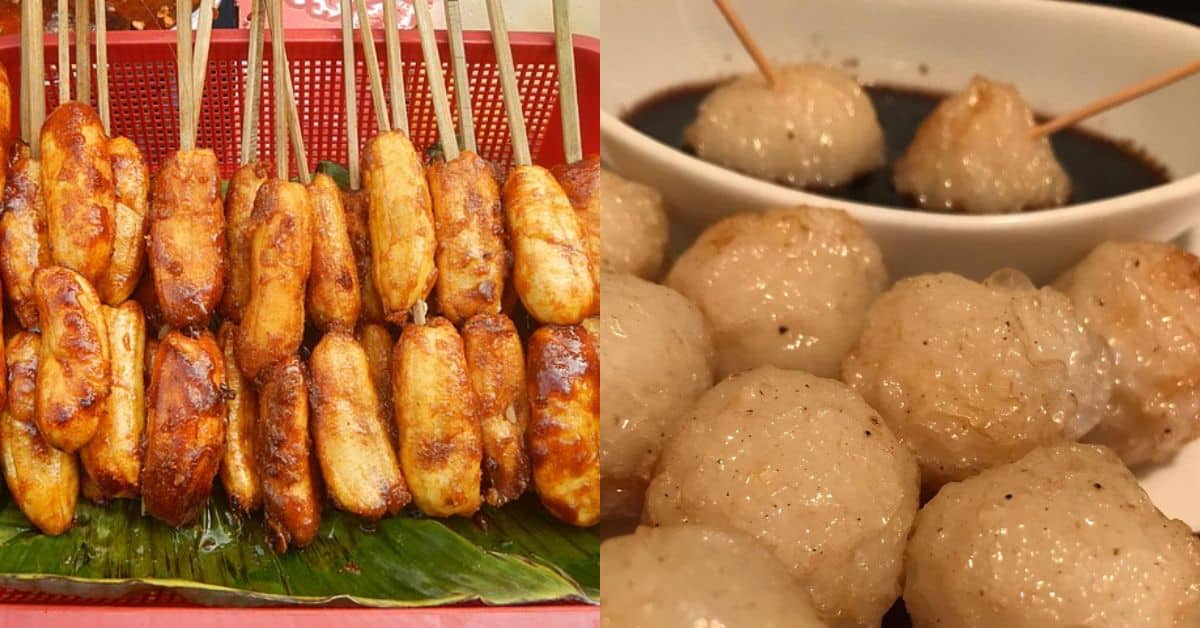8 Popular Snacks to Try While Visiting the Philippines
If you can avoid the seasonal rainfall, there is no time of the year that visiting the Philippines won’t be a pleasant experience. The weather is always comfortable with temperatures ranging from 28 degrees (Celsius) to as high as 33 degrees (Celsius) throughout most of the year.
This is a 3rd-world nation that has beautiful beach resorts, amusement parks, and more malls per capita than any other country in the world. Did we forget to mention that the Philippines also serves as home to great snack foods?
Please leave a review or any memories of this snack in the comments at the bottom of this page. Thank you!
It’s true. Snack time in the Philippines is a sheer delight. There are so many tasty and refreshing snacks (merienda in Tagalog) from which to choose. It’s enough to drive a visitor crazy. Thankfully, tourists can expect complimentary snacks and even free casino chips while enjoying the night life.
In case you don’t have enough time to check all the snack variations that are available around the villages and barangays of the Philippines, here are eight snacks that belong on your bucket list.
1. Banana Cue
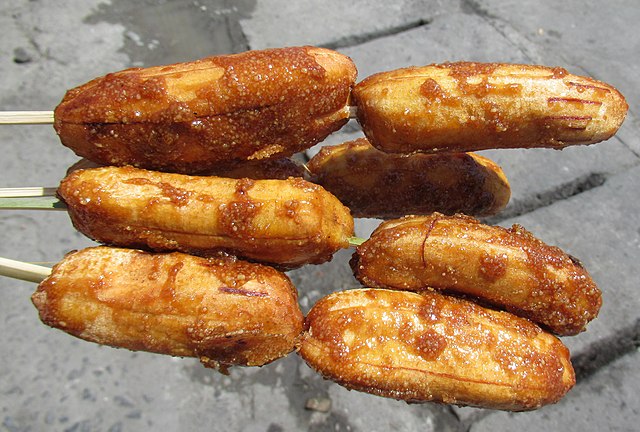
As you might guess, several Filipino snacks revolve around fruits that are plentiful on the islands. A banana cue stands as a Filipino favorite in the outer provinces. It’s largely sold on the streets and is seldom encountered in restaurants. Filipinos love this snack because it’s an affordable snack at about 10 pisos per. That’s about $.20 US.
The banana cue is created by skewing 2-3 whole small bananas on a stick, coating them in a brown sugar mix, and roasting them over a grill. They can also be deep-fried in a vat of cooking oil.
2. Turon
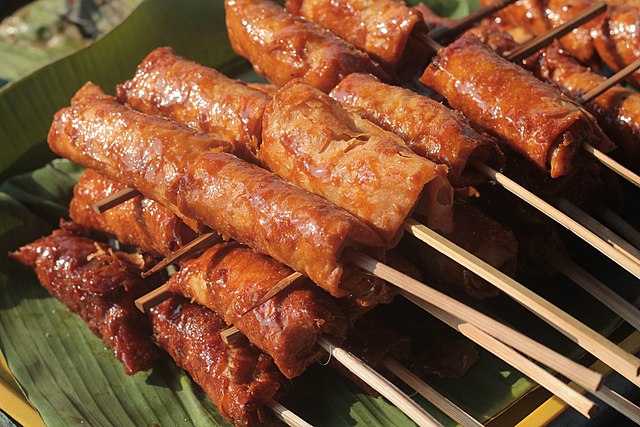
This is another banana-based snack food option. In this case, bananas are sliced, coated in the brown sugar mix, and wrapped in a “lumpia” wrapper. The wrapped Turon is then deep-fried. Normally served at room temperature, this crunchy dessert is sold on the streets and in restaurants. In a restaurant, a scoop of vanilla ice cream can add to the eating experience.
3. Suman
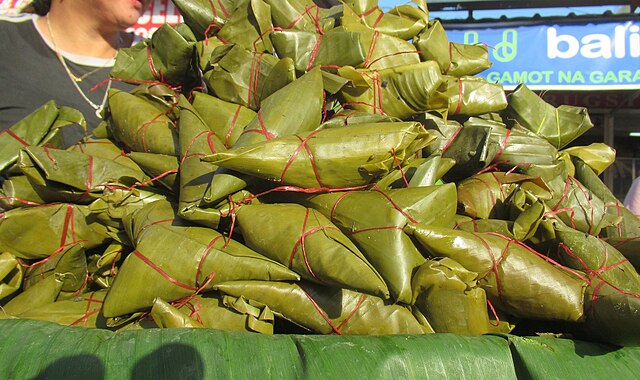
Suman is a common breakfast food in small villages because it’s affordable and easy to make. It starts with glutinous rice that is cooked in brown sugar and coconut milk. The cooked rick is then wrapped in a banana leaf and steamed. The finished product is a tasty “sticky rice” snack that has a touch of sweetness. Some variations will include a caramelized syrup that is drizzled on top of the Suman before eating.
4. Puto / Kutsinta
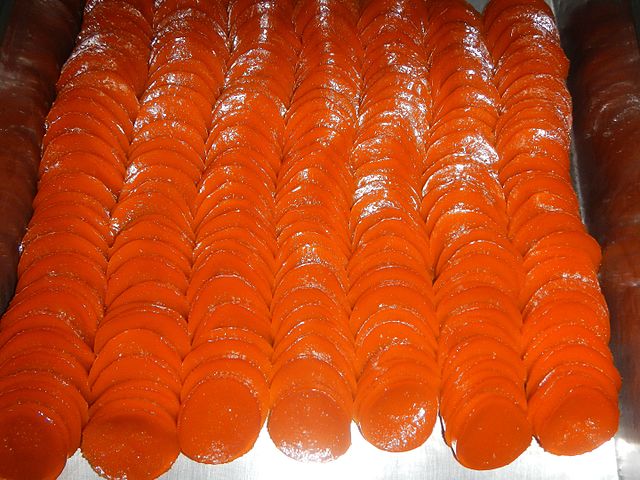
Puto is another rice-based snack food. It is prepared by soaking glutinous rice or rice flour in coconut milk and forming into small muffins. Larger pieces of puto can be put in cups made from banana leaves. The soaked rice product is allowed to dry, hopefully in a refrigerator. The price of a muffin is about 5 pisos or $.10 US.
The basic puto is as white as the rice. However, other ingredients can be added to create a colored and flavored puto. Common ingredients include cheese (queso) and ube.
Kutsinta is a puto variation that is prepared with lye, achuete seeds, and brown sugar. The finished snack is stickier and chewier than standard puto.
5. Mangga’t Bagoong
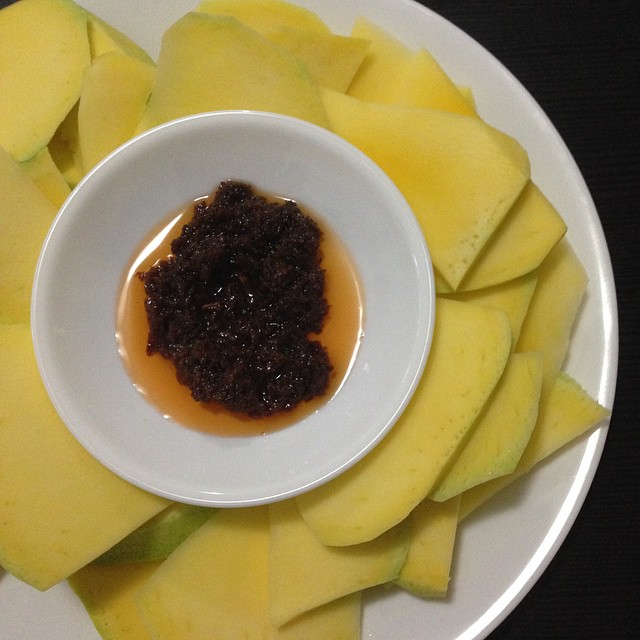
Honestly, Mangga’t Bagoong is an acquired taste. However, those who love it love it. In fact, other types of Bagoong are becoming popular in other countries too. It is typically sold by street vendors at about 25 pisos or $.50 per bag.
Preparation starts with green (unripe) mangoes that are sliced into strips. Note: Green mangoes are crunchy and sour. What makes this snack an acquired taste is the dipping sauce that is made with fermented shrimp or krill (the bagoong).
6. Taho
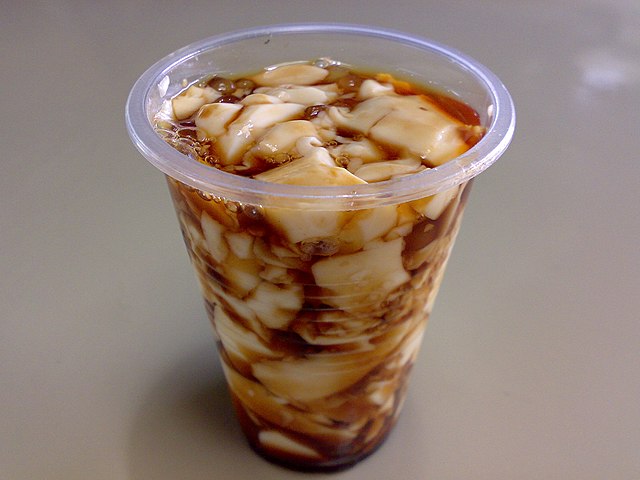
Taho is a favorite snack with Filipino children, but adults love it as well. It is often sold door-to-door by street vendors who lug their wares around in heavy metal containers. Taho costs 10 pisos ($.20 US) for a small cup and 20 pisos ($.40 US) for a larger cup.
Taho is made with silkened and sweetened tofu. This tasty snack is served layered in a plastic cup with a mixture of brown sugar syrup and tapioca pearls added for extra flavor.
7. Fish Balls
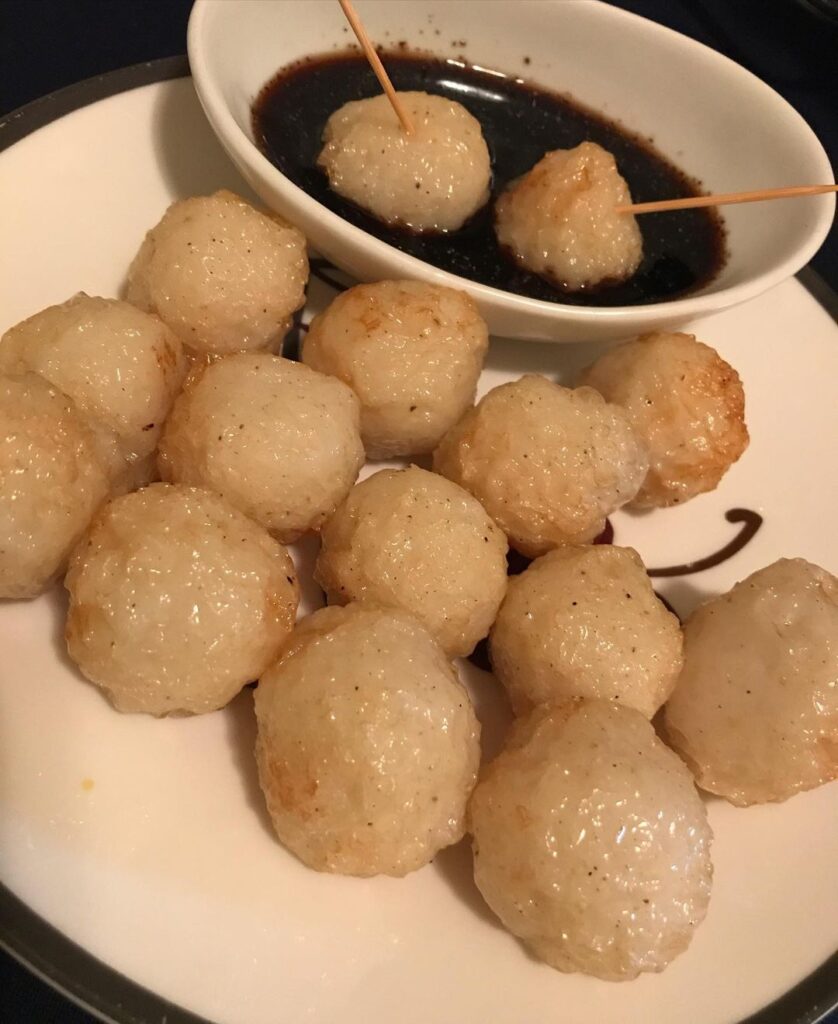
In every city, barangay, and village, mobile street vendors are moving about, selling a varied selection of street foods. Among Filipino children, fish balls are considered a favorite snack. At a price of 10-15 pisos for 5 fish balls, it’s something every school kid can afford between classes.
Fish balls are prepared from a mixture of fish meat flakes and flour that are rolled into balls and deep-fried. Consumers can choose from 1 of 3 sauces: brown sauce, vinegar, or chili sauce.
8. Chicharon
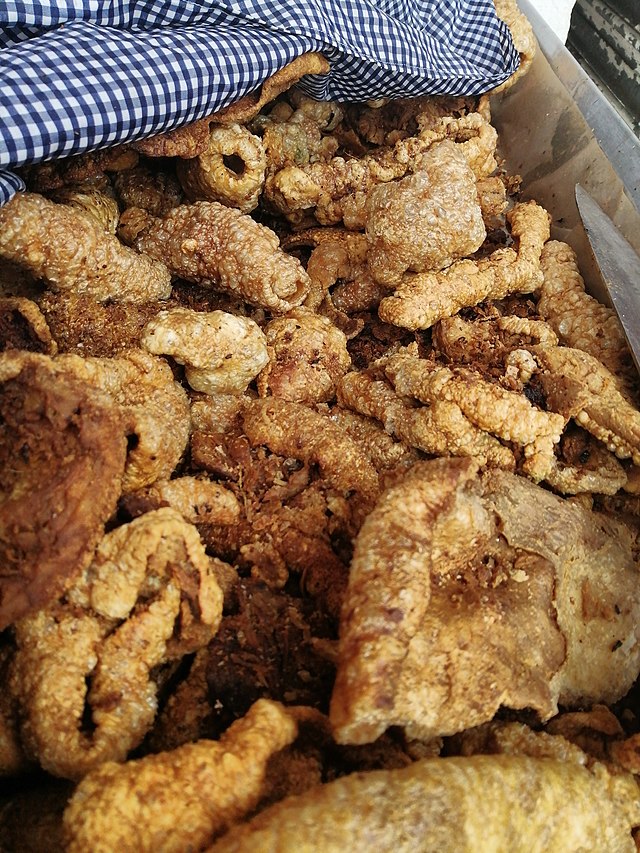
Filipinos love fried snacks. They also have a lot of Spanish influence in their culture. That might be why chicharons and a favorite on-the-go snack food. Prices can range from 25 pisos ($.50 US) for a small bag to 50 pisos ($1.00 US) for a larger bag.
A chicharon is made from deep-fried pork or chicken skin. It can also be made with certain animal body parts. A vinegar dipping sauce is often included for extra flavor.
Summing things up, if a country’s cuisine says something about a nation, it’s the delicious snack foods in the Philippines that are likely to draw most of your attention.
Jason has been a snack addict since his early years and now enjoys nothing more than reviewing his favourite candys and sweets.
Please leave a review or any memories of this snack in the comments below. Thank you!
Click here for a full A-Z list of Snacks and Candy
